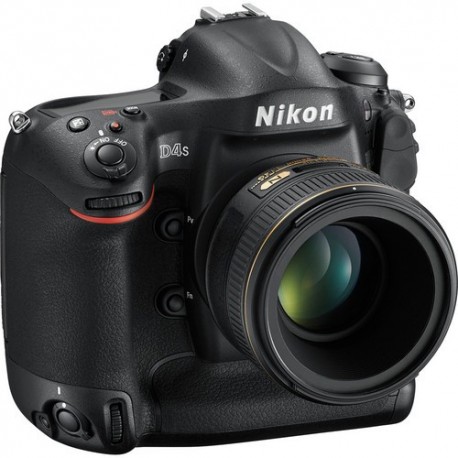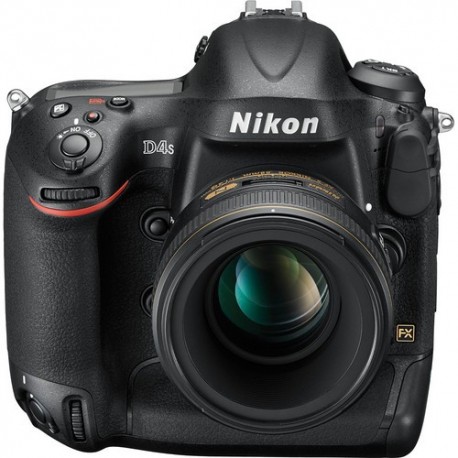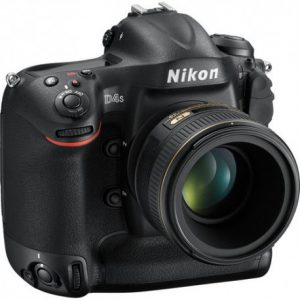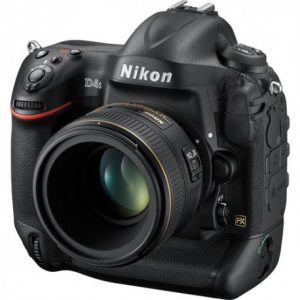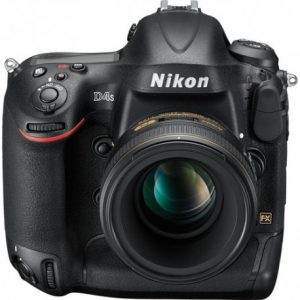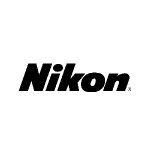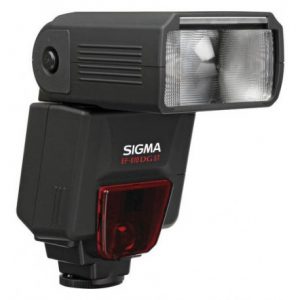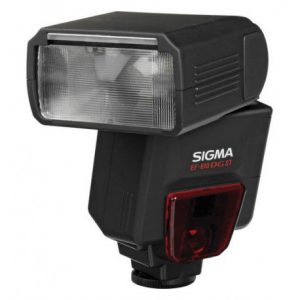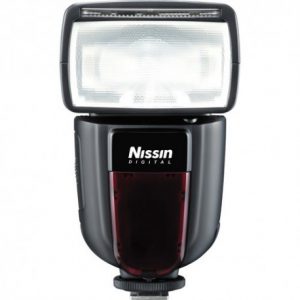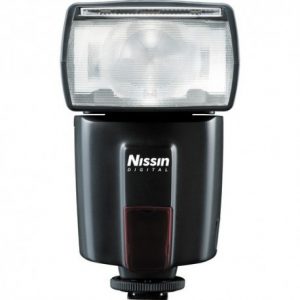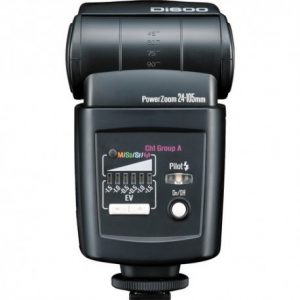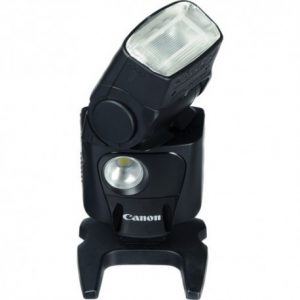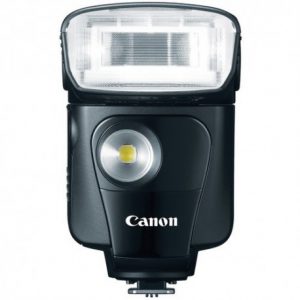Description
Overview
16.2MP FX-Format CMOS Sensor
EXPEED 4 Image Processor
3.2″ 921k-Dot LCD Monitor
Full HD 1080p Video Recording at 60 fps
Multi-CAM 3500FX 51-Point AF Sensor
Native ISO 25600, Extended to ISO 409600
11 fps Shooting for 200 Shots with AE/AF
91k-Pixel RGB Sensor and Group Area AF
14-Bit RAW Files and 12-Bit RAW S Format
1000 Base-T Gigabit Wired LAN Support
The new Nikon D4S is an unparalleled state-of-the-art camera perfected to meet professional demands. It has an incredible FX-format CMOS sensor with 16.2 effective megapixels and EXPEED 4 image-processing engine that empowers you to capture full-frame images with superior quality that’s second to none. The D4S possesses a superior ISO range of 100 to 25,600, so even under extreme lighting conditions performance remains assured and effortless. Enjoy the thrill of 11 frames per second with full autofocus and auto exposure, coupled with improved tracking of moving subjects, for outstanding results every time. Redesigned, refined and remarkable, the D4S is the ultimate choice for those who would never compromise.
Experience the power of perfection
Boasting 16.2 effective megapixels with an ISO sensitivity range from 100 to 25,600 (expandable from 50 to 409,600), the new EXPEED 4 image-processing engine complements the FX-format CMOS sensor to create images with stunning sharpness and enhanced depth. Meanwhile, its 91K-pixel RGB sensor complements the Advanced Scene Recognition system to deliver exceptional focusing in every frame.
Exceptional focusing and tracking
Expect sharp and clear pictures for all your action sequences. The D4S is designed with a plethora of AF options to deliver high-performance autofocusing even under extreme conditions. Equipped with 51 focus points, it is capable of tracking the subject throughout the frame, letting you refocus and lock on your subject quickly, even if the focus was initially on the background.
The new Group-area AF mode reduces background focusing to bring you greater focusing accuracy every time. The subject can be detected swiftly due to the 15 cross-type focus points at the centre of the frame. It also supports maximum apertures faster than f/8 for greater flexibility. Even when using 1.4× or 1.7× teleconverters, focusing becomes elementary so you can focus on capturing the perfect shot.
A body immaculately refined
The lightweight and rugged body of the Nikon D4S is meticulously crafted from magnesium alloy, with comprehensive sealing against dust and water drops. It also possesses a better, deeper grip with more tactile buttons for improved operability and comfortable handling during shooting.
Crystal clear, personalised display
The Nikon D4S now has a more accessible glass pentaprism viewfinder with 100% frame coverage, coupled with an improved information display. Information is coherent and clearly laid out, with less cluttered icons. The D4S is also equipped with a 3.2-inch, approximately 921k-dot wide viewing angle TFT LCD monitor designed to suppress internal reflections and provide lucid information. Equally amazing are the newly tweaked display characteristics. You can customise its colours and marvel at the colour reproduction as it becomes even more accurate and vibrant.
Movements in pin-point precision
Excellence has been redefined. The D4S uses a recording format of 60/50p that delivers fluid subject movement and smooth changes in exposure, even when the brightness of the scene changes dramatically. Choose from three image area options – FX-based movie format, DX-based movie format, and the 1920 x 1080 crop. The adjustable recording quality and sound level, along with frequency range (in vocal or wide) provide you with greater versatility during recording to satisfy the perfectionist in you.
In addition, the HDMI support allows for quick viewing and higher image quality during playback. For clearer audio, wind noise can be reduced with the built-in microphone. Auto ISO control is also possible when using ‘M’ mode, allowing the adjustment of maximum ISO sensitivity settings for movie recording.
Dynamic workflow
The White Balance (WB) achieves greater accuracy and more vivid skin tones under a variety of lighting conditions thanks to an improved algorithm, bringing you greater efficiency when you’re working on-site. The D4S also features a spot white balance option that enables you to preset white
balance during live view, from even a very small white or gray portion of the frame.
After you’ve completed your shoot, the data can be transferred in a flash with the D4S’ dual memory card slots that offer greater speed and convenience. The wired LAN (1000BASE-T) now performs at a faster transfer speed, significantly cutting down your transfer time.
Shoot silently with ease
Only the D4S lets you enjoy top-notch, intelligent camera operations with additional helpful information, such as an indicator for continuous shooting using the silent shutter release – so you can combine professionalism with discretion.
Outstanding range of accessories
Begin a new photographic adventure with the greatest confidence and explore the boundless potential of the D4S with our range of NIKKOR lenses. Expand your creative possibilities with the array of cutting-edge accessories, including the full support of the Creative Lighting System,
wireless accessories, GPS unit, and more.
| Tech Specs | |
| Type | Single-lens reflex digital camera |
| Lens mount | Nikon F mount (with AF coupling and AF contacts) |
| Effective angle of view | Nikon FX format |
| Effective pixels | 16.2 million |
| Image sensor | 36.0 x 23.9 mm CMOS sensor |
| Total pixels | 16.6 million |
| Dust-reduction System | Image sensor cleaning, Image Dust Off reference data (optional Capture NX 2 software required) |
| Image size (pixels) | FX (36×24) image area: 4928 x 3280 (L), 3696 x 2456 (M), 2464 x 1640 (S) 1.2x (30×20) image area: 4096 x 2720 (L), 3072 x 2040 (M), 2048 x 1360 (S) DX (24×16) image area: 3200 x 2128 (L), 2400 x 1592 (M), 1600 x 1064 (S) 5 : 4 (30×24) image area: 4096 x 3280 (L), 3072 x 2456 (M), 2048 x 1640 (S) FX-format photographs taken in movie live view (16:9): 4928 x 2768 (L), 3696 x 2072 (M), 2464 x 1384 (S) DX-format photographs taken in movie live view (16:9): 3200 x 1792 (L), 2400 x 1344 (M), 1600 x 896 (S) FX-format photographs taken in movie live view (3:2): 4928 x 3280 (L), 3696 x 2456 (M), 2464 x 1640 (S) DX-format photographs taken in movie live view (3:2): 3200 x 2128 (L), 2400 x 1592 (M), 1600 x 1064 (S) Note: A DX-based format is used for photographs taken using the DX (24×16) 1.5x image area; an FX-based format is used for all other photographs. |
| File format | NEF (RAW): 12 or 14 bit, lossless compressed, compressed, or uncompressed; small size available (12-bit uncompressed only) TIFF (RGB) JPEG: JPEG-Baseline compliant with fine (approx. 1 : 4), normal (approx. 1 : 8), or basic (approx. 1 : 16) compression (Size priority); Optimal quality compression available NEF (RAW)+JPEG: Single photograph recorded in both NEF (RAW) and JPEG formats |
| Picture Control System | Standard, Neutral, Vivid, Monochrome, Portrait, Landscape; selected Picture Control can be modified; storage for custom Picture Controls |
| Media | XQD and Type I CompactFlash memory cards (UDMA compliant) |
| Dual card slots | Either card can be used for primary or backup storage or for separate storage of NEF (RAW) and JPEG images; pictures can be copied between cards. |
| File system | DCF 2.0, DPOF, Exif 2.3, PictBridge |
| Viewfinder | Eye-level pentaprism single-lens reflex viewfinder |
| Frame coverage | FX (36×24): Approx. 100% horizontal and 100% vertical 1.2x (30×20): Approx. 97% horizontal and 97% vertical DX (24×16): Approx. 97% horizontal and 97% vertical 5:4 (30×24): Approx. 97% horizontal and 100% vertical |
| Magnification | Approx. 0.7 x (50 mm f/1.4 lens at infinity, -1.0 m-1) |
| Eyepoint | 18 mm (-1.0 m-1; from center surface of viewfinder eyepiece lens) |
| Diopter adjustment | -3 – +1 m-1 |
| Focusing screen | Type B BriteView Clear Matte Mark VIII screen with AF area brackets (framing grid can be displayed) |
| Reflex mirror | Quick return |
| Depth-of-field preview | Pressing Pv button stops lens aperture down to value selected by user (A and M modes) or by camera (P and S modes) |
| Lens aperture | Instant return, electronically controlled |
| Compatible lenses | Compatible with AF NIKKOR lenses, including type G, E, and D lenses (some restrictions apply to PC lenses) and DX lenses (using DX 24×16 1.5x image area), AI-P NIKKOR lenses, and non-CPU AI lenses (exposure modes A and M only). IX NIKKOR lenses, lenses for the F3AF, and non-AI lenses can not be used. The electronic rangefinder can be used with lenses that have a maximum aperture of f/5.6 or faster (the electronic rangefinder supports the 11 focus points with lenses that have a maximum aperture of f/8 or faster). |
| Type | Electronically-controlled vertical-travel focal-plane shutter |
| Speed | 1/8000 – 30 s in steps of 1/3, 1/2, or 1 EV, bulb, time, X250 |
| Flash sync speed | X=1/250 s; synchronizes with shutter at 1/250 s or slower |
| Release mode | S (single frame), CL (continuous low speed), CH (continuous high speed), Q (quiet shutter-release), self-timer, MUP (mirror up) |
| Approximate frame advance rate | Up to 10 fps (CL) or 10-11 fps (CH) |
| Self-timer | 2 s, 5 s, 10 s, 20 s; 1-9 exposures at intervals of 0.5, 1, 2, or 3 s |
| Metering | TTL exposure metering using RGB sensor with approximately 91K (91,000) pixels |
| Metering method | Matrix: 3D color matrix metering III (type G, E, and D lenses); color matrix metering III (other CPU lenses); color matrix metering available with non-CPU lenses if user provides lens data Center-weighted: Weight of 75% given to 12 mm circle in center of frame. Diameter of circle can be changed to 8, 15, or 20 mm, or weighting can be based on average of entire frame (non-CPU lenses use 12-mm circle) Spot: Meters 4 mm circle (about 1.5% of frame) centered on selected focus point (on center focus point when non-CPU lens is used) |
| Range (ISO 100, f/1.4 lens, 20 °C/68 °F) | Matrix or center-weighted metering: -1 – +20 EV Spot metering: 2-20 EV |
| Exposure meter coupling | Combined CPU and AI |
| Exposure mode | Programmed auto with flexible program (P); shutter-priority auto (S); aperture-priority auto (A); manual (M) |
| Exposure compensation | -5 – +5 EV in increments of 1/3, 1/2, or 1 EV |
| Exposure bracketing | 2-9 frames in steps of 1/3, 1/2, 2/3, or 1 EV; 2-5 frames in steps of 2 or 3 EV |
| Flash bracketing | 2-9 frames in steps of 1/3, 1/2, 2/3, or 1 EV; 2-5 frames in steps of 2 or 3 EV |
| White balance bracketing | 2-9 frames in steps of 1, 2, or 3 |
| ADL bracketing | 2 frames using selected value for one frame or 3-5 frames using preset values for all frames |
| Exposure lock | Luminosity locked at detected value with the center of the sub-selector |
| ISO sensitivity (Recommended Exposure Index) | ISO 100 – 25600 in steps of 1/3, 1/2, or 1 EV. Can also be set to approx. 0.3, 0.5, 0.7, or 1 EV (ISO 50 equivalent) below ISO 100 or to approx. 0.3, 0.5, 0.7, 1, 2, 3, or 4 EV (ISO 409600 equivalent) above ISO 25600; auto ISO sensitivity control available |
| Active D-Lighting | Can be selected from Auto, Extra high +2/+1, High, Normal, Low, or Off |
| Autofocus | Nikon Advanced Multi-CAM 3500FX autofocus sensor module with TTL phase detection, fine-tuning, and 51 focus points (including 15 cross-type sensors; f/8 supported by 11 sensors) |
| Detection range | -2 – +19 EV (ISO 100, 20 °C/68 °F) |
| Lens servo | Autofocus (AF): Single-servo AF (AF-S); continuous-servo AF (AF-C); predictive focus tracking automatically activated according to subject status Manual focus (M): Electronic rangefinder can be used |
| Focus point | Can be selected from 51 or 11 focus points |
| AF-area mode | Single-point AF, 9-, 21-, or 51- point dynamic-area AF, 3D-tracking, group-area AF, auto-area AF |
| Focus lock | Focus can be locked by pressing shutter-release button halfway (single-servo AF) or by pressing the center of the sub-selector |
| Flash control | TTL: i-TTL flash control using RGB sensor with approximately 91K (91,000) pixels is available with SB-910, SB-900, SB-800, SB-700, SB-600, SB-400, or SB-300; i-TTL balanced fill-flash for digital SLR is used with matrix and center-weighting metering, standard i-TTL flash for digital SLR with spot metering |
| Flash mode | Front curtain sync, slow sync, rear-curtain sync, red-eye reduction, red-eye reduction with slow sync, slow rear-curtain sync, off, Auto FP High-Speed Sync supported |
| Flash compensation | -3 – +1 EV in increments of 1/3, 1/2, or 1 EV |
| Flash-ready indicator | Lights when optional flash unit is fully charged; flashes after flash is fired at full output |
| Accessory shoe | ISO 518 hot-shoe with sync and data contacts and safety lock |
| Nikon Creative Lighting System (CLS) | Advanced Wireless Lighting supported with SB-910, SB-900, SB-800, or SB-700 as a master flash, and SB-600 or SB-R200 as remotes, or SU-800 as commander; Auto FP High-Speed Sync and modeling illumination supported with all CLS-compatible flash units except SB-400 and SB-300; Flash Color Information Communication and FV lock supported with all CLS-compatible flash units |
| Sync terminal | ISO 519 sync terminal with locking thread |
| White balance | Auto (2 types), incandescent, fluorescent (7 types), direct sunlight, flash, cloudy, shade, preset manual (up to 6 values can be stored, spot white balance measurement available during live view), choose color temperature (2500 K-10000 K), all with fine-tuning. |
| Modes | Live view photography (quiet or silent), movie live view |
| Lens servo | Autofocus (AF): Single-servo AF (AF-S); full-time servo AF (AF-F) Manual focus (M) |
| AF-area mode | Face-priority AF, wide-area AF, normal-area AF, subject-tracking AF |
| Autofocus | Contrast-detect AF anywhere in frame (camera selects focus point automatically when face-priority AF or subject-tracking AF is selected) |
| Metering | TTL exposure metering using main image sensor |
| Frame size (pixels) and frame rate | 1920 x 1080; 60 p (progressive), 50 p, 30 p, 25 p, 24 p 1920 x 1080 crop; 30 p, 25 p, 24 p 1280 x 720; 60 p, 50 p 640 x 424; 30 p, 25 p Actual frame rates for 60 p, 50 p, 30 p, 25 p, and 24 p are 59.94, 50, 29.97, 25, and 23.976 fps respectively; all options support both high and normal image quality |
| File format | MOV |
| Video compression | H.264/MPEG-4 Advanced Video Coding |
| Audio recording format | Linear PCM |
| Audio recording device | Built-in monaural or external stereo microphone; sensitivity adjustable |
| ISO sensitivity | Exposure modes P, S, and A: Auto ISO sensitivity control (ISO 200 to Hi 4) with selectable upper limit Exposure mode M: Auto ISO sensitivity control (ISO 200 to Hi 4) available with selectable upper limit; manual selection (ISO 200 to 25600 in steps of 1/3, 1/2, or 1 EV) with additional options available equivalent to approximately 0.3, 0.5, 0.7, 1, 2, 3, or 4 EV (ISO 409600 equivalent) above ISO 25600 |
| Other options | Index marking, time-lapse photography |
| Monitor | 8-cm/3.2-in., approx. 921k-dot (VGA) TFT LCD with 170 ° viewing angle, approximately 100% frame coverage, manual monitor brightness control, and automatic monitor brightness control using ambient brightness sensor |
| Playback | Full-frame and thumbnail (4, 9, or 72 images) playback with playback zoom, movie playback, photo and/or movie slide shows, histogram display, highlights, photo information, location data display, auto image rotation, voice memo input and playback, and IPTC information embedding and display |
| USB | Hi-Speed USB |
| HDMI output | Type C HDMI connector |
| Audio input | Stereo mini-pin jack (3.5mm diameter; plug-in power supported) |
| Audio output | Stereo mini-pin jack (3.5mm diameter) |
| Ten-pin remote terminal | Can be used to connect optional remote control, optional WR-R10 (requires WR-A10 adapter) or WR-1 wireless remote controller, GP-1/GP-1A GPS unit, or GPS device compliant with NMEA0183 version 2.01 or 3.01 (requires optional MC-35 GPS adapter cord and cable with D-sub 9-pin connector) |
| Ethernet | RJ-45 connector – Standards: IEEE 802.3ab (1000BASE-T)/IEEE 802.3u (100BASE-TX)/IEEE 802.3 (10BASE-T) – Data rates: 10/100/1000 Mbps with auto detect (maximum logical data rates according to IEEE standard; actual rates may differ) – Port: 1000BASE-T/100BASE-TX/10BASE-T (AUTO-MDIX) |
| Peripheral connector | For WT-5 |
| Supported languages | Arabic, Chinese (Simplified and Traditional), Czech, Danish, Dutch, English, Finnish, French, German, Indonesian, Italian, Japanese, Korean, Norwegian, Polish, Portuguese (Portugal and Brazil), Romanian, Russian, Spanish, Swedish, Thai, Turkish, Ukrainian |
| Battery | One rechargeable Li-ion EN-EL18a battery |
| AC adapter | EH-6b AC adapter; requires EP-6 power connector (available separately) |
| Tripod socket | 1/4 in. (ISO 1222) |
| Dimensions (W x H x D) | Approx. 160 x 156.5 x 90.5 mm (6.3 x 6.2 x 3.6 in.) |
| Weight | Approx. 1350 g (2 lb. 15.6 oz.) with battery and XQD memory card but without body cap and accessory shoe cover; approx. 1180 g/2 lb. 9.6 oz. (camera body only) |
| Temperature | 0 °C-40 °C (+32 °F-104 °F) |
| Humidity | 85% or less (no condensation) |
| Supplied accessories | BF-1B body cap, BS-2 accessory shoe cover, EN-EL18a rechargeable Li-ion battery with terminal cover, MH-26a battery charger with power cable and two contact protectors, USB cable clip, HDMI cable clip, UF-2 connector cover for stereo mini plug cable, UC-E15 USB cable, AN-DC11 strap, ViewNX 2 CD |


